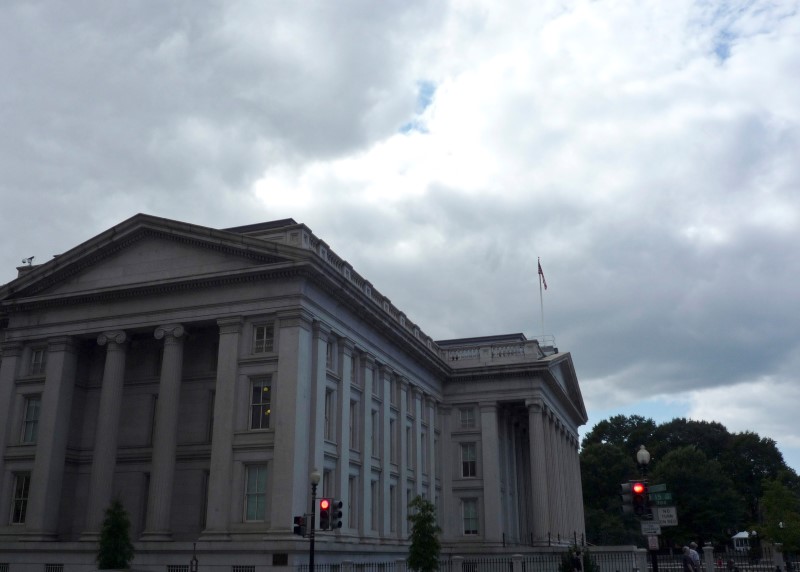By Karen Brettell
(Reuters) - A collapse in Treasury yields as concerns about the spreading coronavirus sends investors scurrying for low-risk government securities has led some to start preparing for the possibility that the U.S. debt yields could turn negative.
The Federal Reserve on Tuesday made its first emergency cut since the financial crisis, dropping the federal funds rate by 50 basis points to the 1.0% to 1.25% band.
The move has not satisfied markets, however, with stock markets cratering and Treasury yields continuing to plunge to record lows. Interest rate futures traders are now pricing in a 41% probability that rates will be zero-bound by June, according to the CME Group’s FedWatch Tool.
Even if the Fed is resistant to adopting negative rates, as most expect, Treasuries should hold their appeal as the world’s largest and most liquid market. That means that strong demand could send yields on some shorter-dated notes into negative territory, an outcome that seemed unthinkable only a few weeks ago.
Two-year Treasury yields (US2YT=RR) dropped as low as 0.394% on Friday, the lowest since October 2014, when the fed funds rate was zero-bound. Benchmark 10-year yields (US10YT=RR) plunged to a record low of 0.660%.
“Even if the Fed’s effective lower bound for fed funds is still positive, there is no reason that twos, fives, even potentially 10s couldn't trade negative,” said Jon Hill, an interest rate strategist at BMO Capital Markets in New York.
Yields on short-term Treasury bills have briefly traded negative during times of stress. It would be unprecedented, however, for short and intermediate-dated notes do the same. A negative yield means that investors would pay the U.S. government to hold the debt.
The Fed is reluctant to cut rates into negative territory as it risks disrupting the large U.S. money market sector. There are also questions over whether negative rates have been successful at stimulating growth in other countries.
“We have a very, very large money market complex,” said Subadra Rajappa, head of U.S. interest rate strategy at Societe Generale (PA:SOGN) in New York. “The Fed has resisted taking interest rates to negative territory because they don’t want to disrupt the liquidity in the financial system.”
Economic growth overseas has been far more sluggish than in the United States. The European Central Bank introduced negative interest rates in 2014 and the Bank of Japan followed in 2016. Two-year notes in Germany (DE2YT=RR) and Japan (JP2YT=RR) currently yield -0.86% and -0.28%, respectively.
If longer-dated U.S. Treasury yields hover near zero, some see a risk that a new wave of buying could turn shorter-dated ones negative, even without the Fed adopting a negative policy.
“The one thing about the Treasury market that makes it so attractive regardless of the price is the liquidity and the depth of the market,” said Michael Lorizio, senior fixed income trader at Manulife Asset Management. If longer-dated yields continue to drop then, “the front-end in that scenario would be under significant pressure to maintain the positive yield.”
A notable factor about the current bond rally is that investors are not only preparing for zero-bound rates, but a raft of additional measures including quantitative easing as the Fed battles an economic slowdown. That adds to anticipation that future yield moves may also be unprecedented.
"This is the first time we’re cutting back to zero with a full-blown expectation that QE will soon follow,” said Hill. “We’re at an extremely fragile state right now in the global economy.”
